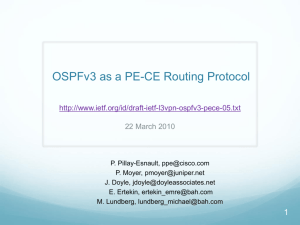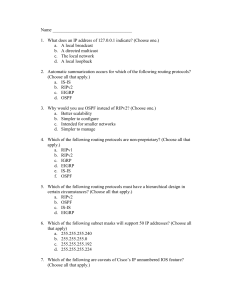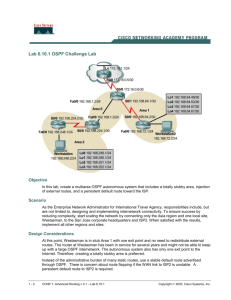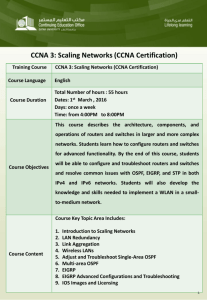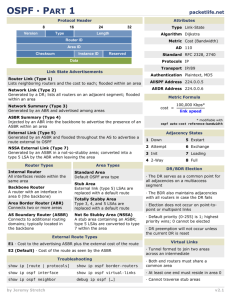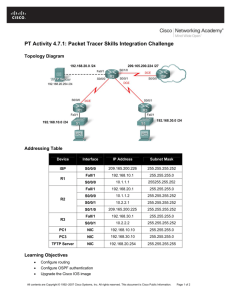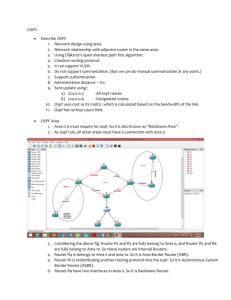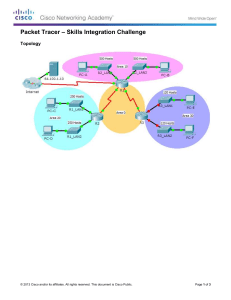Chapter 3
advertisement
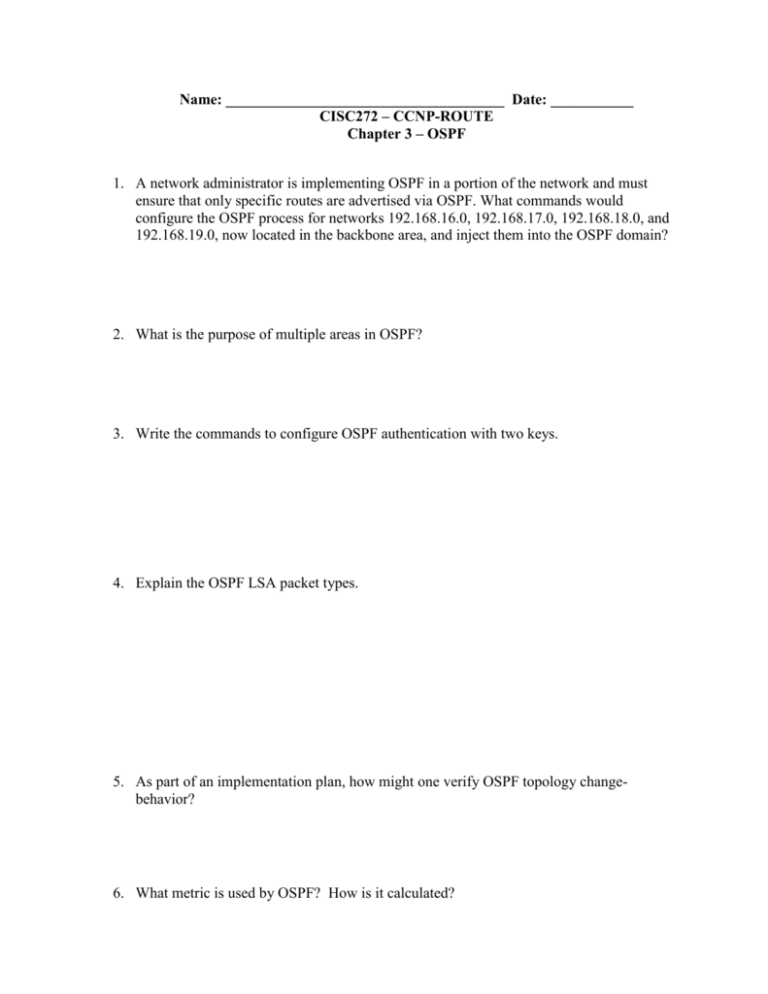
Name: _____________________________________ Date: ___________ CISC272 – CCNP-ROUTE Chapter 3 – OSPF 1. A network administrator is implementing OSPF in a portion of the network and must ensure that only specific routes are advertised via OSPF. What commands would configure the OSPF process for networks 192.168.16.0, 192.168.17.0, 192.168.18.0, and 192.168.19.0, now located in the backbone area, and inject them into the OSPF domain? 2. What is the purpose of multiple areas in OSPF? 3. Write the commands to configure OSPF authentication with two keys. 4. Explain the OSPF LSA packet types. 5. As part of an implementation plan, how might one verify OSPF topology changebehavior? 6. What metric is used by OSPF? How is it calculated? 7. Which three items must match between OSPF neighbors in order to form an adjacency? 8. Describe the OSPF states leading up to (and including) full adjacency. 9. Identify the two multicast address used in OSPF. How are they used? 10. What is the function of the OSPF LSU packet? 11. What “show” command displays the SPF counter? 12. Explain the OSPF network types. Which type requires the election of a DR/BDR? 13. What is the OSPF interface default priority value? What value removes the interface from the DR/BDR election process? 14. When will a router in an OSPF nonbackbone area receive a default route from the ABR or ASBR? 15. What is the correct method to configure route summarization on an OSPF router? 16. What are the advantages of using authentication with OSPF? 17. What can an administrator do to reduce the number of LSA summaries? 18. What should be configured on the routers in Area 1 to eliminate all Type 3, 4, and 5 LSAs, leaving only the default route? 19. A network administrator is troubleshooting a recent OSPF stub configuration between R3 and R4. The only routes that should appear on the routing table for R4 are intra-area routes, the default route, and interarea routes. Given the above configuration, what is the problem? 20. When should OSPF NSSA areas be used? Explain.


